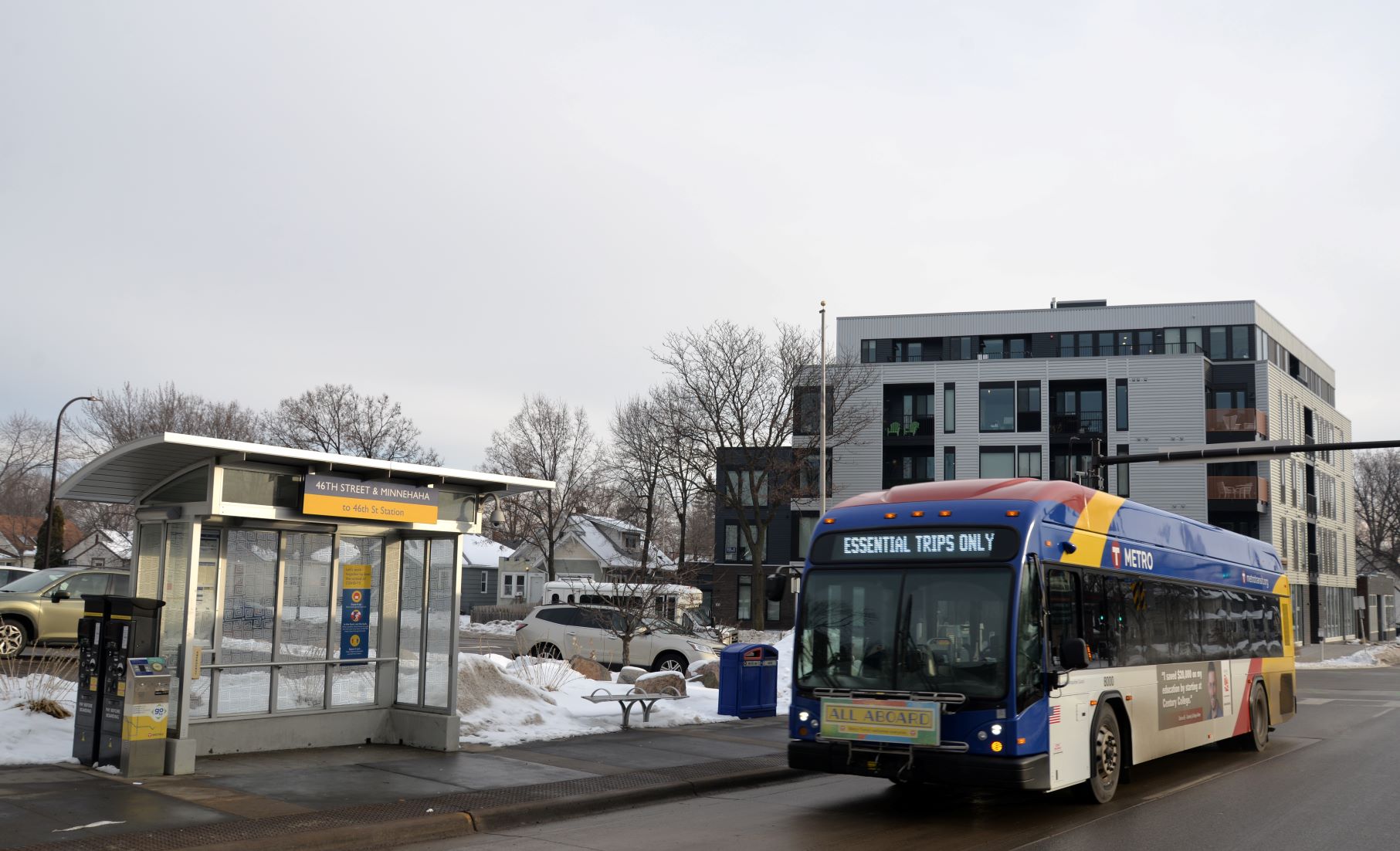
Nearly $14 billion in development was permitted along high-frequency transit corridors between 2003 and 2019, and another $9 billion in development is expected to soon follow, a new study found.
The figures are included in the recently updated Development Trends Along Transit report from Metro Transit’s Transit Oriented Development (TOD) Office. Data from 2020 data will be available later this year.
Sean Sweeney, co-founder of Hall Sweeney Properties, said proximity to the METRO Blue Line’s 46th Street Station was an integral factor in the company’s decision to build the MN46 Apartments two blocks away. The development is also adjacent to a METRO A Line station.
"We have law students who take the light rail to campus, and young professionals who work downtown and at the airport who use the light rail as their main mode of transportation,’’ Sweeney said. “It allows them in many cases to live without a car, a major cost savings.”
After MN46 leased up ahead of projections, Sweeney decided to build another apartment complex across the street. "The proximity to high-frequency transit options for our future tenants played a significant role in our decision to pursue and build this project,’’ he said.
More than a third of all the region's new multi-family units permitted in 2019 are in 3% of the regional land area served by high-frequency transit. Combined, these developments represented $1.8 billion in permit value, which can exclude things like land value.
"It Is both possible and likely that these numbers underestimate the value associated with development near high-frequency transit," Metro Transit TOD planner Amy Yoder said.
The $8.9 billion in development planned along high-frequency transit represents 68% of the region's future planned development. This new development will add another 35,000 multi-family units, more than doubling the number of residences with immediate access to high frequency transit.